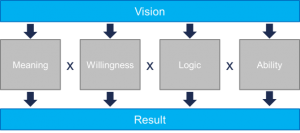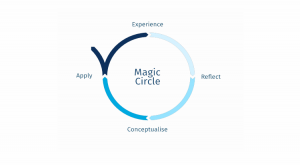S&OP/IBP and the role of serious gaming

Implementing S&OP is simple but not easy; balancing supply and demand in the short and medium term should not be too difficult, although practice often shows otherwise. The biggest challenge in most cases is to create a process that adds so much value for the business that lasting buy-in is created from all stakeholders.

The next step in S&OP maturity, towards IBP, can be a lot more complex. Converting volumes to revenues is not easy in many companies due to complex price structures and forecasting gross margins can get really complicated. Data and system aspects will therefore soon dominate an implementation project, thereby also increasing the lead time considerably.
The big risk: what originally started as a business initiative becomes a long-term IT and supply chain project and the business loses its interest. Disastrous for every initiative and even more so for IBP; even if it is technically successful, IBP will not fly without buy-in from all stakeholders.
S&OP/IBP change model
For these reasons, Involvation consistently applies its proven change model for S&OP and IBP projects, in order to move from the vision of “one set of numbers” to a working process that really contributes to the realisation of the company’s strategy and profitability. According to this model, four aspects must be assessed and addressed in each stage:

- “Meaning”: ensure that all stakeholders understand what’s in it for them.
- “Willingness”: ensure commitment and willingness to act.
- “Logic”: make sure that process, organisation, data and systems are all in order.
- “Ability”: Ensure that all involved have the right skills and competencies.
All these four aspects must be okay; in case one of them is zero, the chance of success will be minimal.
Power of serious gaming
Serious gaming can play an important role both to create commitment and build the right skills. You can explain to someone why S&OP is important, but the question is to what extent that message really gets across. The power of rational arguments, often transferred via PowerPoint, happens to be limited. Allowing people to discover and experience something for themselves greatly increases the chance of success. In the real world this is not always feasible, but in the right virtual environment it can work really well.
For S&OP/IBP training and continuous improvement, simulation and serious gaming are particularly powerful tools. S&OP and IBP are best learned by doing them and receiving structural feedback, but due to the slowness of these processes (typically monthly cycles), the learning process is extremely slow. Continuous improvement in slow motion therefore, with the big risk that it will not really happen.
Long horizon
Next to the process being slow, the long planning horizon is a problem as well; in S&OP/IBP, the effects of decisions will often become clear many months later only. The question is whether effective feedback is still feasible then. Can you really judge whether a decision that was made six months earlier was optimal and can you still learn something from it? Undoubtedly in theory, but in practice it is questionable whether this will really happen.

Here too serious gaming can come in handy, especially in combination with the “Magic Circle”. By doing this in a virtual environment and with the right facilitation, you can go through a number of S&OP/IBP cycles in a very short time and improve them each cycle. By using a realistic simulated environment, you can reduce the feedback loops from many months to a few hours. By applying the “Magic Circle”, you can actually close the feedback loops, even if they are cross-functional and relate to long-term strategies. By applying simulations, we can finally really learn by doing, even in S&OP and IBP.
Conclusion
Are simulation and serious gaming the ultimate solutions for building S&OP/IBP competencies, creating buy-in and driving continuous improvement? Of course not; they are complex processes that require a mix of formal learning, coaching, PDCA cycles, etc. But a representative simulation offers a powerful platform to really give the S&OP or IBP competencies in your company a boost. And it can also make learning fun; not unimportant if you are looking for real buy-in as well!


